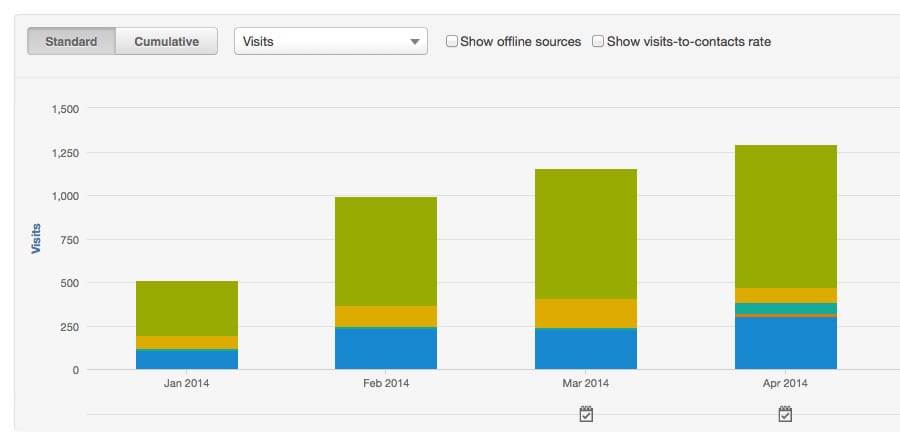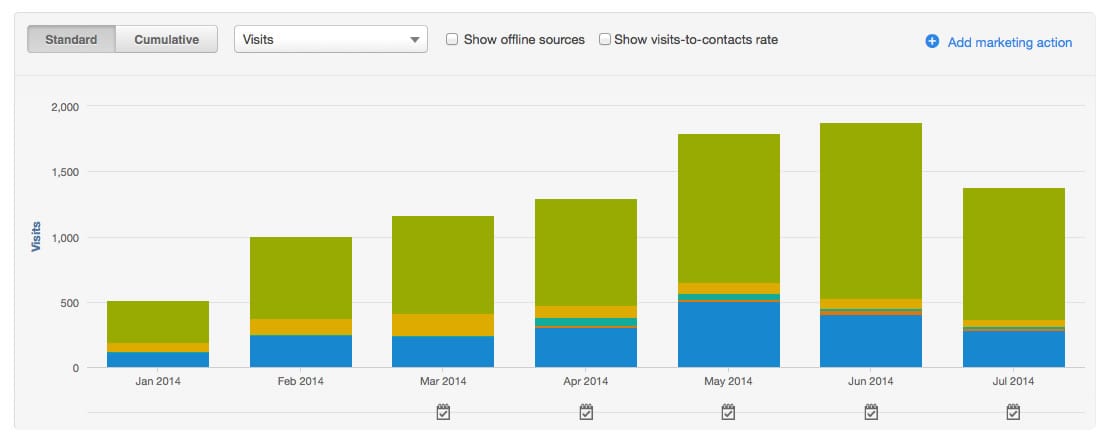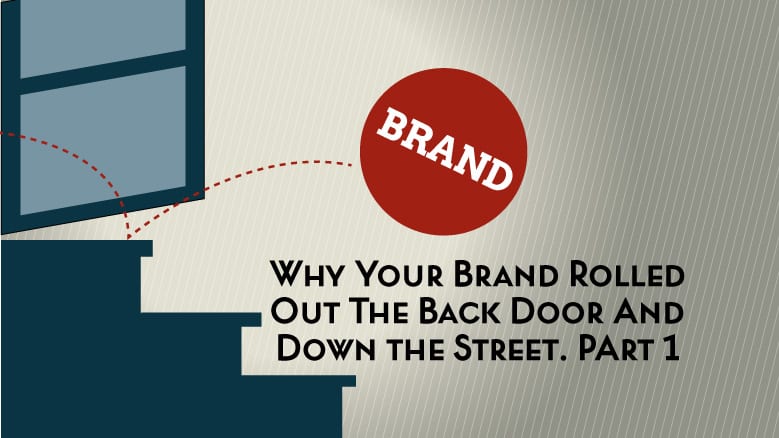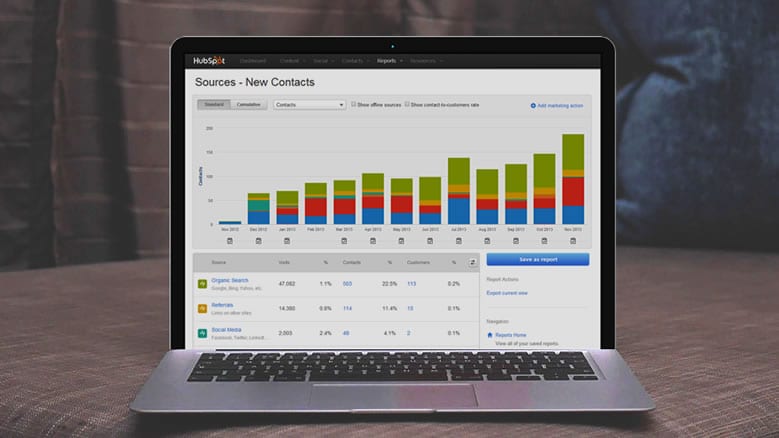
Business owners today are faced with many options and challenges on how to market their businesses and make their marketing dollars go farther. From the Yellow Pages (yp.com), Angie’s List, trade show events to glossy print ads—the options are endless. However, I want to introduce you to a relatively new marketing and sales methodology that can help address one of your business’ biggest challenges: growth.
In this article, I explain 5 high-level factors of inbound marketing to help you understand how to attract customers, grow your brand and your bottom line. Inbound marketing harnesses the power of your company’s website to generate traffic and leads, automate marketing, acquire customers and understand your cost per lead more effectively. If you’re new to the concept of inbound marketing, read: What is Inbound Marketing? first.
1. Grow by generating website traffic
The World Wide Web celebrated its 25th birthday this past March. Since its inception, it has revolutionized the way we do business. According to iMedia, 93% of B2B buyers use search to begin the buying process. 93 percent! If you’re serious about generating traffic month after month—it’s absolutely critical that the products and services you provide can be found online by your prospective customers/clients/dealers.
So, how do you get more traffic? Well, once again the options are endless. A good place to start is with inbound marketing’s approach to blogging. If you aren’t blogging, you’re missing out on what could be your biggest opportunity to generate traffic.
Take a look at these statistics:
- Blog frequency impacts customer acquisition. 92% of companies who blogged multiple times a day acquired a customer through their blog. (HubSpot State of Inbound Marketing, 2013)
- The global population of blog readers keeps growing. (eMarketer, August 2010)
- 81% of marketers rated their blog as useful or better. (HubSpot State of Inbound Marketing, 2013)
- There are 31% more bloggers today than there were three years ago. (eMarketer, August 2010)
- 46% of people read blogs more than once a day. (HubSpot Science of Blogging 2010)
- Most people read 5-10 blogs. (HubSpot Science of Blogging, 2010)
- Nearly 40% of US companies use blogs for marketing purposes. (eMarketer, August 2010)
As you can see, one sure fire way to generate traffic to your website is to tap into blogging. Blogging can expand your business’ digital footprint which, creates more opportunities to generate traffic. And with 60% of all organic clicks going to the top three search results; blogging will also contribute to higher rankings. Every blog post you create will continue to drive traffic to your website for the duration of its existence.
You may be thinking, “we blog, but it doesn’t seem to help.” If your blog isn’t performing the way it should, you may be doing something wrong. Are you seeking to solve your customer’s problems, or do you use it for self-promotion? There is a big difference and each serves two different audiences. To blog effectively, you must seek to provide information that helps the people you are trying to attract.
[easyembed field=”blogCTA”]
2. Grow by turning visits into leads
Now that you’re blogging correctly, it’s time to turn that traffic into leads. To capture leads, you must offer premium content in the form of webinars, whitepapers, ebooks or videos. By utilizing call-to-actions (CTAs), forms and landing pages, you create a method for gathering your prospect’s contact information so that you can understand their needs and better solve their problems. You also will begin to establish trust, gain credibility and thought leadership which is important to attracting customers/clients/dealers etc.

Actual Inbound Marketing Lead Generation Data: 1150% increase!
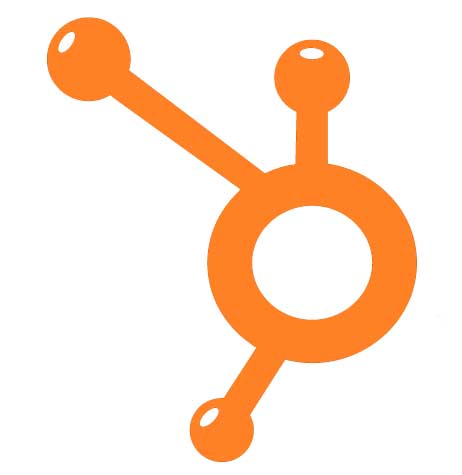 3. Grow by marketing automation
3. Grow by marketing automation
To do inbound marketing effectively you will need marketing automation software. We recommend a tool like HubSpot that ties all your online marketing efforts together into one convenient web-based source. With HubSpot, you can automate a lot of the manual tasks like social media publishing, email and workflows. The Contacts feature in HubSpot allows you to understand the areas of interest on your website that your leads have visited—equipping you to have a more meaningful and impactful conversation with them. HubSpot’s Competitor analysis tool allows you to see what your competitors are up to and how to outrank them on the search engines. With a marketing automation tool like HubSpot, you will save time, energy and get the support you need to conduct a successful inbound marketing campaign.
4. Grow by turning leads into customers
Eventually—if you’ve followed points 1 through 3—your search engine rankings, blogging and social media following will increase over time and you’ll begin to see an increase in traffic and leads. 60% of the sales cycle is already over, once you’ve determined that a lead is ready to talk to you. It now becomes time to reach out personally if you feel they meet your qualifications and convert your lead into a customer.
So for example, you may send them an email asking them if they would like to set up an introductory phone call or you may choose to call them directly. Whatever method you choose, the prospect has already warmed to the idea of working with you and is interested in learning more about your products or services.
5. Grow by being smarter with your marketing dollars
Inbound marketing has shown a 62% reduction in cost per lead. (Source: Mashable) it makes it the perfect solution to save money and achieve your business goals cost effectively over time. Instead of investing heavily in outbound marketing methods like printed advertising, direct mail, billboard, radio, placards at bus stops or television ads, inbound provides the data, wherewithal and insight you need to make your marketing dollars work harder. Utilizing HubSpot’s Marketing Performance Module, you’ll be able to see how your marketing dollars are working and allow you to avoid the black box which is outbound marketing.
In conclusion, I’ve given you just a taste of how inbound marketing can grow your business by utilizing your website. Inbound marketing is a great solution for businesses trying to grow, stabilize or become more profitable. Its methodology enables you to generate traffic and leads, acquire new customers and provide ROI analysis to help you grow your business more profitably.
If you’re interested in learning more about inbound marketing please contact our Indianapolis or Denver Branding Agency for a complimentary inbound marketing assessment and begin growing your business today.



